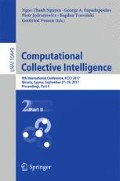Abstract
This paper presents the concept of using embedded MEMS sensors position objects especially when the GPS signal is weak, e.g. in underground car parks, tunnels. Such an approach is important for controlling indoor objects or autonomous vehicles. The signals are acquired by a Raspberry Pi platform with external sensors such as an accelerometer, gyroscope and magnetometer. A self-propelled vehicle was used and several exemplary paths were designed for acquiring signals. It was proven that appropriate signal filtering allows a position to be determined with a small error at a constant velocity condition. Comparing filters such as the moving average, median, Savitzky-Golay and Hampel filters were investigated. Moreover, the system offers a high degree of accuracy in a short time for indoor hybrid positioning systems that also have video processing capabilities. The cyber-physical system can also be used with the existing infrastructure in a building, such as Wi-Fi access points and video cameras.
References
Baheti, R., Gill, H.: Cyber-physical systems. The Impact of Control Technol. 12, 161–166 (2011)
Kao, H.-A., Jin, W., Siegel, D., Lee, J.: A cyber physical interface for automation systems—methodology and examples. Machines 3(2), 93–106 (2015)
Ziębiński, A., Cupek, R., Grzechca, D., Chruszczyk, Ł.: Review of advanced driver assistance systems (ADAS). In: 13th International Conference on Computational Methods in Sciences and Engineering, April 2017
Ziebinski, A., Cupek, R., Erdogan, H., Waechter, S.: A survey of ADAS technologies for the future perspective of sensor fusion. In: Nguyen, N.-T., Manolopoulos, Y., Iliadis, L., Trawiński, B. (eds.) ICCCI 2016. LNCS, vol. 9876, pp. 135–146. Springer, Cham (2016). doi:10.1007/978-3-319-45246-3_13
Pittet, S., Renaudin, V., Merminod, B., Kasser, M.: UWB and MEMS based indoor navigation. J. Navig. 61(03), 369–384 (2008)
Budniak, K., Tokarz, K., Grzechca, D.: Practical verification of radio communication parameters for object localization module. In: Gruca, A., Brachman, A., Kozielski, S., Czachórski, T. (eds.) Man–Machine Interactions 4. AISC, vol. 391, pp. 487–498. Springer, Cham (2016). doi:10.1007/978-3-319-23437-3_41
Grzechca, D., Chruszczyk, Ł.: Location and identification wireless unit for object's monitoring in a protected area. In: 12th International Conference on Data Networks, Communications, Computers (DNCOCO 2013), pp. 186–191 (2013)
Alarifi, A., et al.: Ultra wideband indoor positioning technologies: analysis and recent advances. Sensors 16(5), 707 (2016)
Chruszczyk, Ł., Zając, A., Grzechca, D.: Comparison of 2.4 and 5 GHz WLAN network for purpose of indoor and outdoor location. Int. J. Electron. Telecommun. 62(1), 71–79 (2016)
Grzechca, D.E., Pelczar, P., Chruszczyk, L.: Analysis of object location accuracy for iBeacon technology based on the RSSI path loss model and fingerprint map. Int. J. Electron. Telecommun. 62(4), 371–378 (2016)
Mautz, R.: Indoor positioning technologies. Habilitation Thesis submitted to ETH Zurich (2012)
Burger, W.: Zhang’s camera calibration algorithm: in-depth tutorial and implementation. month (2016). Technical report HGB16-05, 16 May 2016, Department of Digital Media, University of Applied Sciences Upper Austria, School of Informatics, Communications and Media, Softwarepark 11, 4232 Hagenberg, Austria. www.fh-hagenberg.at, https://www.researchgate.net/profile/Wilhelm_Burger/publication/303233579_Zhang’s_Camera_Calibration_Algorithm_In-Depth_Tutorial_and_Implementation/links/5739ade408ae9f741b2c816f/Zhangs-Camera-Calibration-Algorithm-In-Depth-Tutorial-and-Implementation.pdf
Grzechca, D., Wróbel, T., Bielecki, P.: Indoor localization of objects based on RSSI and MEMS sensors. In: 2014 14th International Symposium on Communications and Information Technologies (ISCIT), pp. 143–146. IEEE (2014). doi:10.1109/ISCIT.2014.7011888
Cupek, R., Ziebinski, A., Fojcik, M.: An ontology model for communicating with an autonomous mobile platform. In: Kozielski, S., Mrozek, D., Kasprowski, P., Małysiak-Mrozek, B., Kostrzewa, D. (eds.) BDAS 2017. CCIS, vol. 716, pp. 480–493. Springer, Cham (2017). doi:10.1007/978-3-319-58274-0_38
Cupek, R., Ziebinski, A., Franek, M.: FPGA based OPC UA embedded industrial data server implementation. J. Circuits Syst. Comput. 22(08), 18 (2013)
Pearson, R.K., et al.: The class of generalized Hampel filters. In: 2015 23rd European Signal Processing Conference (EUSIPCO), pp. 2501–2505. IEEE (2015). doi:10.1109/EUSIPCO.2015.7362835
Smith, S.W.: The scientist and engineer’s guide to digital signal processing (1997). http://www.dspguide.com/CH28.PDF
Pearson, R.K., Neuvo, Y., Astola, J., Gabbouj, M.: Generalized Hampel filters. EURASIP J. Adv. Signal Process. 2016(1), 87 (2016)
Schafer, R.: What is a Savitzky-Golay Filter? [Lecture Notes]. IEEE Sig. Process. Mag. 28(4), 111–117 (2011)
Acknowledgements
This work was supported by the European Union from the FP7-PEOPLE-2013-IAPP AutoUniMo project “Automotive Production Engineering Unified Perspective based on Data Mining Methods and Virtual Factory Model” (grant agreement no: 612207) and research work financed from funds for science in years 2016–2017 allocated to an international co-financed project (grant agreement no: 3491/7.PR/15/2016/2) and supported by Polish Ministry of Science and Higher Education with subsidy for maintaining research potential.
Author information
Authors and Affiliations
Corresponding author
Editor information
Editors and Affiliations
Rights and permissions
Copyright information
© 2017 Springer International Publishing AG
About this paper
Cite this paper
Grzechca, D., Tokarz, K., Paszek, K., Poloczek, D. (2017). Using MEMS Sensors to Enhance Positioning When the GPS Signal Disappears. In: Nguyen, N., Papadopoulos, G., Jędrzejowicz, P., Trawiński, B., Vossen, G. (eds) Computational Collective Intelligence. ICCCI 2017. Lecture Notes in Computer Science(), vol 10449. Springer, Cham. https://doi.org/10.1007/978-3-319-67077-5_25
Download citation
DOI: https://doi.org/10.1007/978-3-319-67077-5_25
Published:
Publisher Name: Springer, Cham
Print ISBN: 978-3-319-67076-8
Online ISBN: 978-3-319-67077-5
eBook Packages: Computer ScienceComputer Science (R0)

